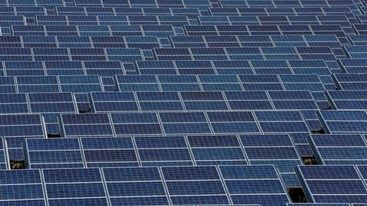Sunday, 05/05/2024 | 07:27 GMT+7
Energy efficiency is fast becoming a priority for a number of design and manufacturing industries. Taking energy from renewable sources, recycling existing energy, or using components that don’t need much juice are becoming popular options for organizations looking to cut energy costs in their production and other facilities.
There has been significant research in a number of areas to achieve these goals, especially in the areas of alternative energy sources — which include harvesting energy from the environment and the devices themselves — and in the development of low-power electronics that can use their own energy or don’t consume much to operate.
Solar Energy When The Sun Doesn’t Shine
To get the most out of renewable or reusable energy sources, researchers are trying to understand concepts that will help optimize energy generation from these sources — for example, how to harvest energy even at night.

To this end, a team at the University of Texas at Arlington Materials Science and Engineering Department, led by assistant professor Fuqiang Liu, have found a way to solve this issue with an all-vanadium photoelectrochemical flow cell that can store solar energy on a large scale, even at night.
Most solar energy systems rely on using sunlight immediately, which is more limiting than if they could also use energy at night or when it’s cloudy. A system like the one Liu and his team developed could be a huge breakthrough for the use of solar energy. Researchers are currently working on a larger prototype of the system to test how well it scales, he said.
Reuse and Recycle
Renewable sources of energy like the wind and the sun are obvious targets for energy harvesting, but they certainly aren’t the only ones. New technologies like piezoelectric-based devices can be used to harvest energy from vibration, motion, and pressure, which can be convenient for powering a variety of small electronic devices and components like switches, microcontrollers, and FPGAs.
A piezoelectric energy source can be derived in bursts, often storing and accumulating for later use. In very simple systems, a simple capacitor storage system may be sufficient to give a very low-power MCU the juice needed to power up and perform simple calculations several times a second.
Smart use of the MCU’s low-power states is usually critical in low-power applications, and newer MCUs can sleep indefinitely while using only microamperes of current. This makes it possible to use them in these types of very low-power applications.
System designers can choose from components that use harvested energy for power, so they are less energy-taxing on a system overall. ZF Friedrichshafen AG’s CHERRY electronics business unit, for example, has developed a switch that uses the energy from the flipping action of the switch itself -- be it manual or automated -- to power its wireless transmission, which not only reduces energy consumption but also eliminates some of the cabling typically used to connect components.
Less Is More When It Comes to Power
Keeping system power consumption low isn’t always easy, since sometimes components are required that need to perform heavy-duty jobs. The good news is that there are low-power components that can still perform at a high level and allow for energy optimization even with large performance demands.
Digital signal processors (DSPs) are a good example of this. DSPs began as standalone devices for processing audio signals 30 years ago but now have evolved into small-scale and massively parallel multicore processors that combine with general-purpose processors (GPP) and other types of processing cores in heterogeneous system-on-a-chip (SoC) devices.
Even though DSPs now act as an essential cog in the innovative new applications emerging today -- such as machine vision, automotive and infotainment systems, home and industrial automation, video encoding/decoding, biometrics, and high-performance computing -- they don’t consume a lot of power, making them a low-energy component that packs a mighty punch.
On the other hand, FPGAs, which also have a big responsibility in a system, using programmable fabric to create custom logic, have not traditionally been low-power components. But there are some new FPGAs available now that can still perform at a high level without massive power consumption.
MCUs also are going low-power for optimizing energy consumption, with some of the newest ones offering very low standby power or even battery back-up modes with power in the nA range.
Texas Instruments and STMicroelectronics recently rolled out MCUs featuring what they’re calling "best-in-the-industry" efficiency. The new breed of MCUs also offer searing performance based on ARM Cortex cores.
As industry demand for both optimization in both energy generation and consumption has grown, it’s clear many in the industry are working on meeting these challenges without sacrificing -- and at times even enhancing -- performance.
Anh Tuan







